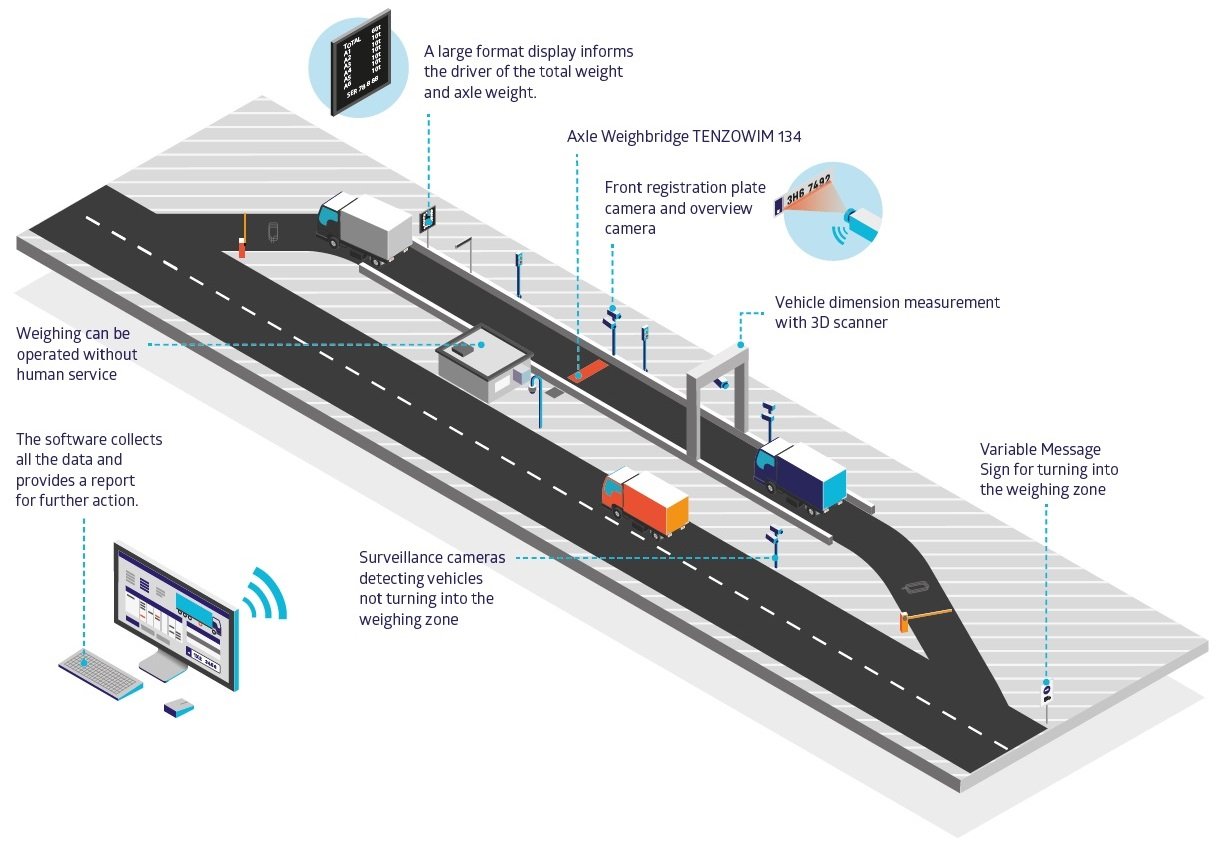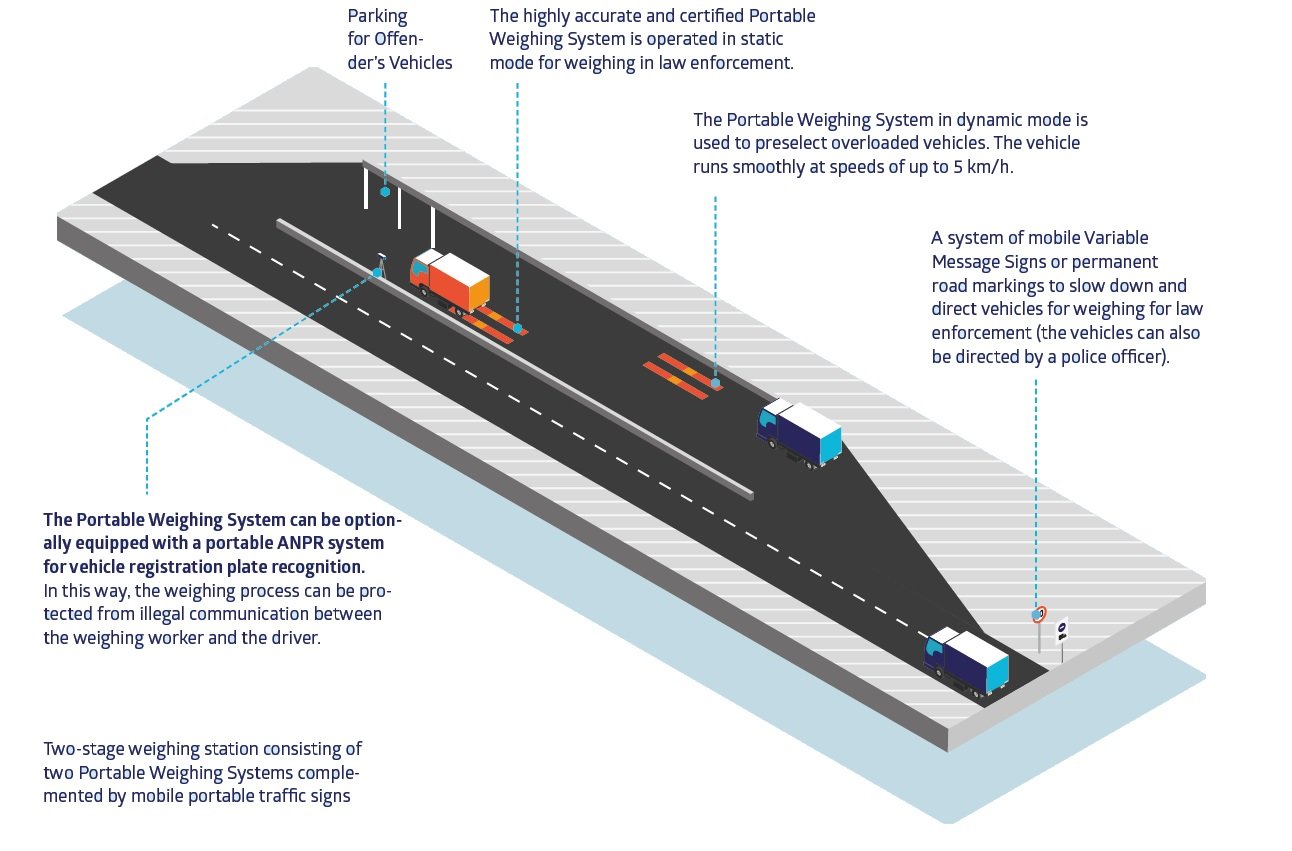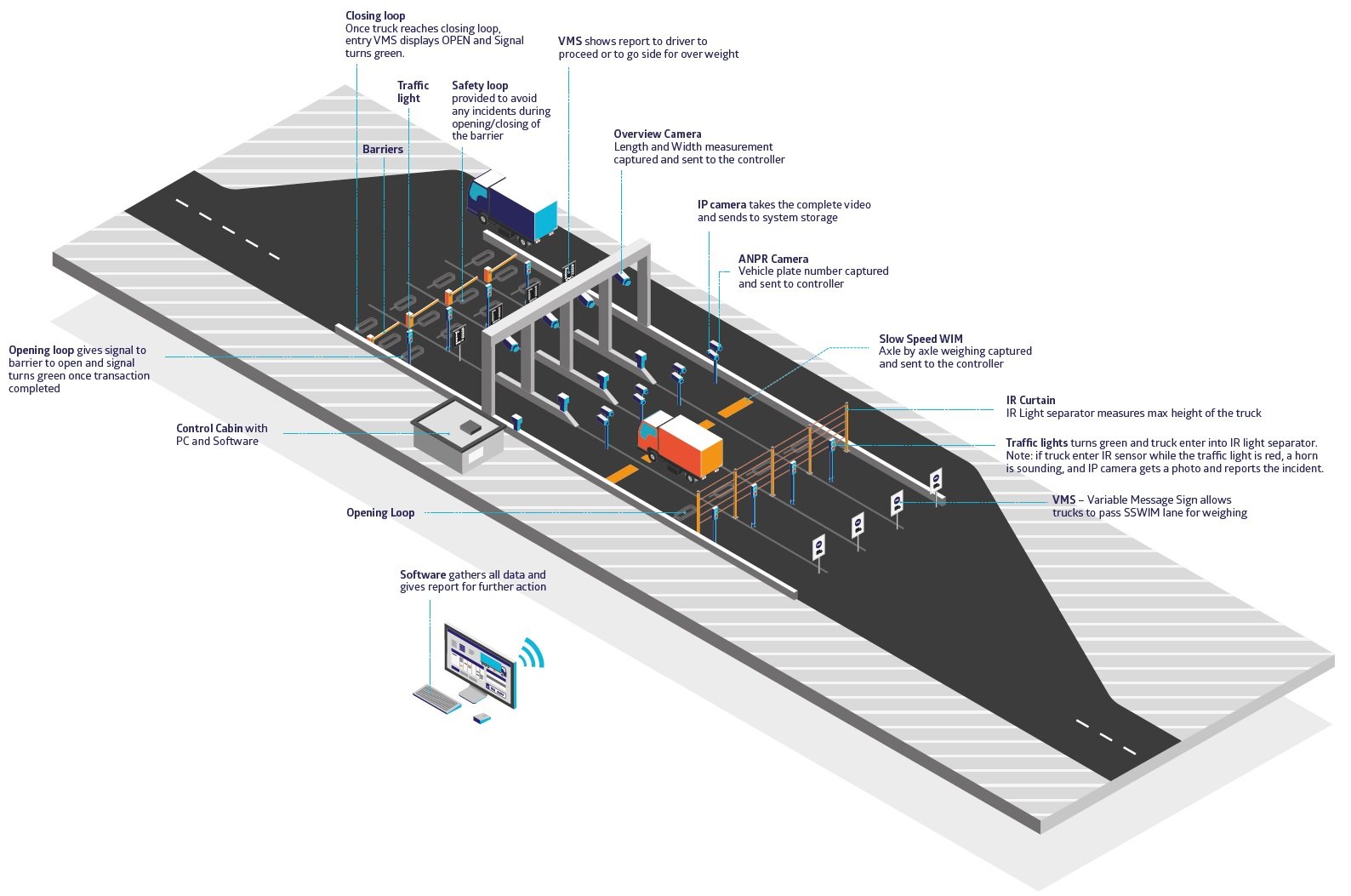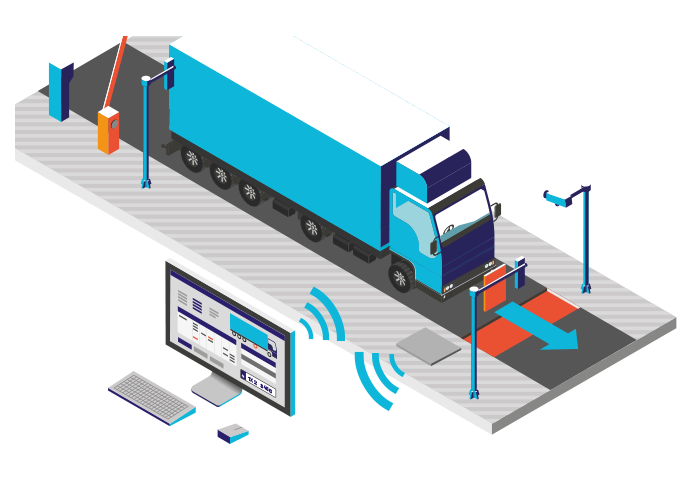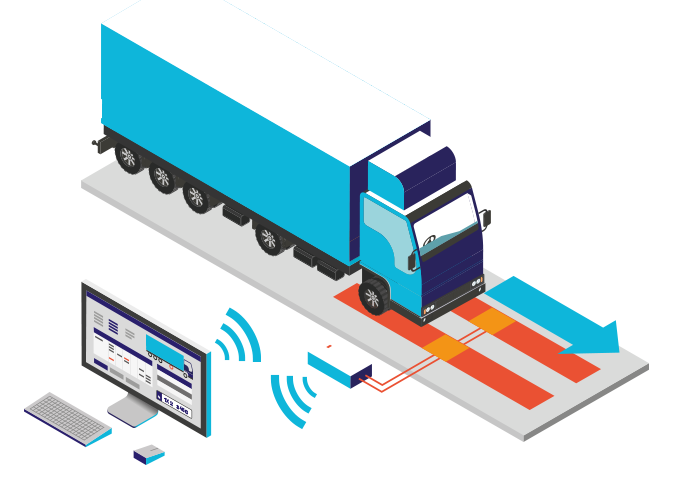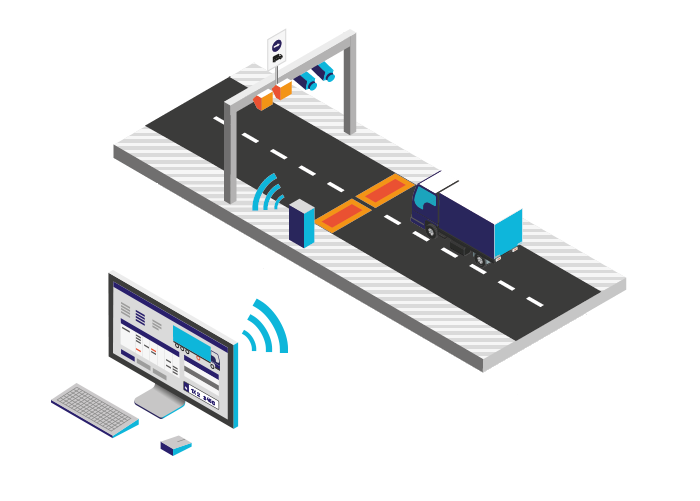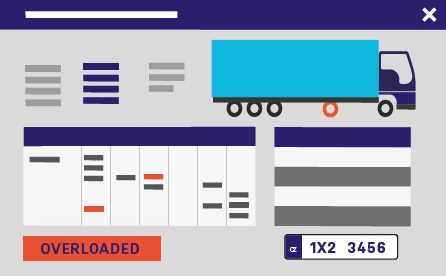Let's go to protect the road infrastructure together! We are ready to start!
- Permanent protection against overloaded vehicles
- Operation without the presence of human service
- Connection with the register of offences
- The minor offense fee can be paid via card on site
Optimal configuration of the second stage of the weighing station operated in unattended mode and approved according to the international recommendation OIML R. 134, i.e. with high weighing accuracy and 100% relevance of weighing results.
The previously picked vehicle is guided by Variable Message Signs to the second stage weighing zone and then weighed automatically without stopping in automatic operation. Thanks to advanced technologies, it is possible not only to reliably identify the vehicle, but also to find out other data, such as exceeding its dimensions.
Information about overloaded vehicle is then sent directly to the national offence register (see legislation of the respective country) or the specific competent authority for the offence(s) at hand.
This station is a one-way design intended for first and lower class roads. If used in attended operation, it can be complemented by a cargo transfer station. The undeniable advantage is the coverage of almost all passing trucks. A driver who refuses to respect traffic signs and enter the lane to be weighed commits an offense, which is subsequently resolved in administrative proceedings.


